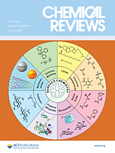
V. Georgakilas, J. A. Perman, J. Tucek and R. Zboril: Broad Family of Carbon Nanoallotropes: Classification, Chemistry, and Applications of Fullerenes, Carbon Dots, Nanotubes, Graphene, Nanodiamonds, and Combined Superstructures, CHEMICAL REVIEWS, vol. 115, iss. 11, pp. 4744–4822, 2015. DOI: 10.1021/cr500304f, IF = 47.928

V. K. Sharma, J. Filip, R. Zboril, R. S. Varma: Natural inorganic nanoparticles – formation, fate, and toxicity in the environment, CHEM. SOC. REV., Advance Article, 2015.
DOI: 10.1039/c5cs00236b, IF = 38.618
Abstract: Maghemite-supported ultra-fine Pd (1–3 nm) nanoparticles, prepared by a simple co-precipitation method, find application in the catalytic continuous flow hydrogenation of nitroarenes, azides, and alkenes wherein they play an important role in the reduction of various functional groups on the surface of maghemite with catalyst loading (~6 wt% Pd). The salient features of the protocol include expeditious formation of reduced products in high yields under near ambient conditions with recycling of the catalyst (up to 12 cycles) without any decrease in selectivity and yield.
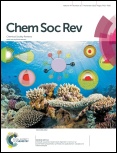
M. B. Gawande, A. Goswami, T. Asefa, H. Guo, A. V. Biradar, D. Peng, R. Zboril, R. S. Varma: Core–shell nanoparticles: synthesis and applications in catalysis and electrocatalysis, CHEM. SOC. REV., vol. 44, iss. 21, pp. 7540-7590, 2015.
DOI: 10.1039/c5cs00343a, IF = 38.618
Abstract: Core–shell nanoparticles (CSNs) are a class of nanostructured materials that have recently received increased attention owing to their interesting properties and broad range of applications in catalysis, biology, materials chemistry and sensors. By rationally tuning the cores as well as the shells of such materials, a range of core–shell nanoparticles can be produced with tailorable properties that can play important roles in various catalytic processes and offer sustainable solutions to current energy problems. Various synthetic methods for preparing different classes of CSNs, including the Stöber method, solvothermal method, one-pot synthetic method involving surfactants, etc., are briefly mentioned here. The roles of various classes of CSNs are exemplified for both catalytic and electrocatalytic applications, including oxidation, reduction, coupling reactions, etc.
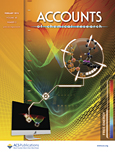
V. K. Sharma, R. Zboril, R. S. Varma: Ferrates: Greener Oxidants with Multimodal Action in Water Treatment Technologies, ACC. CHEM. RES., vol. 48, iss. 2, pp. 182-191, 2015. DOI: 10.1021/ar5004219, IF = 20.268
Abstract: One of the biggest challenges for humanity in the 21st century is easy access to purified and potable water. The presence of pathogens and toxins in water causes more than two million deaths annually, mostly among children under the age of five. Identifying and deploying effective and sustainable water treatment technologies is critical to meet the urgent need for clean water globally. Among the various agents used in the purification and treatment of water, iron-based materials have garnered particular attention in view of their special attributes such as their earth-abundant and environmentally friendly nature. In recent years, higher-valent tetraoxy iron(VI) (FeVIO42–, Fe(VI)), commonly termed, ferrate, is being explored for a broad portfolio of applications, including a greener oxidant in synthetic organic transformations, a water oxidation catalyst, and an efficient agent for abatement of pollutants in water. The use of Fe(VI) as an oxidant/disinfectant and further utilization of the ensuing iron(III) oxides/hydroxide as coagulants are other additional attributes of ferrate for water treatment. This multimodal action and environmentally benign character of Fe(VI) are key advantages over other commonly used oxidants (e.g., chlorine, chlorine dioxide, permanganate, hydrogen peroxide, and ozone). Read more...
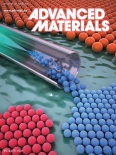
V. Urbanová, K. Holá, A. B. Bourlinos, K. Čépe, A. Ambrosi, A. H. Loo, M. Pumera, F. Karlický, M. Otyepka, R. Zbořil: Thiofluorographene-Hydrophilic Graphene Derivative with Semiconducting and Genosensing Properties, ADV. MATER., vol. 27, iss. 14, pp. 2305-2310, 2015.
DOI: 10.1002/adma.201500094, IF = 19.791
Abstract: We present the first example of covalent chemistry on fluorographene, enabling the attachment of –SH groups through nucleophilic substitution of fluorine in a polar solvent. The resulting thiographene-like, 2D derivative is hydrophilic with semiconducting properties and bandgap between 1 and 2 eV depending on F/SH ratio. Thiofluorographene is applied in DNA biosensing by electrochemical impedance spectroscopy.
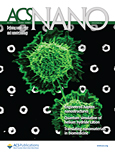
S. Kment, P. Schmuki, Z. Hubicka, L. Machala, R. Kirchgeorg, N. Liu, L. Wang, K. Lee, J. Olejnicek, M. Cada, I. Gregora, R. Zboril: Photoanodes with Fully Controllable Texture: The Enhanced Water Splitting Efficiency of Thin Hematite Films Exhibiting Solely (110) Crystal Orientation, ACS NANO, vol. 9 iss. 7, pp. 7113–7123, 2015.
DOI: 10.1021/acsnano.5b01740, IF = 13.942
Abstract: Hematite, α-Fe2O3, is considered as one of the most promising materials for sustainable hydrogen production via photoelectrochemical water splitting with a theoretical solar-to-hydrogen efficiency of 17%. However, the poor electrical conductivity of hematite is a substantial limitation reducing its efficiency in real experimental conditions. Despite of computing models suggesting that the electrical conductivity is extremely anisotropic, revealing up to 4 orders of magnitude higher electron transport with conduction along the (110) hematite crystal plane, synthetic approaches allowing the sole growth in that direction have not been reported yet. Here, we present a strategy for controlling the crystal orientation of very thin hematite films by adjusting energy of ion flux during advanced pulsed reactive magnetron sputtering technique. The texture and effect of the deposition mode on the film properties were monitored by XRD, conversion electron Mössbauer spectroscopy, XPS, SEM, AFM, PEC water splitting, IPCE, transient photocurrent measurements, and Mott–Schottky analysis. The precise control of the synthetic conditions allowed to fabricate hematite photoanodes exhibiting fully textured structures along (110) and (104) crystal planes with huge differences in photocurrents of 0.65 and 0.02 mA cm–2 (both at 1.55 V versus RHE), respectively. The photocurrent registered for fully textured (110) film is among record values reported for thin planar films. Moreover, the developed fine-tuning of crystal orientation having a huge impact on the photoefficiency would induce further improvement of thin hematite films mainly if cation doping will be combined with the controllable texture.
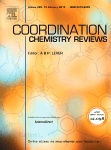
A. K. Rathi, M. B. Gawande, R. Zboril, R. S. Varma: Microwave-Assisted Synthesis–Catalytic Applications in Aqueous Media, COORDINATION CHEMISTRY REVIEWS, vol. 291, pp. 68-94, 2015.
DOI: 10.1016/j.ccr.2015.01.011, IF = 13.324
Abstract: The development of sustainable methods directed towards the synthesis of molecules is due to the heightened awareness and recognition of alternative eco-friendly and economical protocols that have minimum impact on environment. Among others, microwave (MW)-assisted methodology has matured and can be used safely to substitute for conventional laboratory heating techniques; a number of chemical transformations have been achieved thereby improving many existing protocols with superior results when compared to reactions performed under conventional heating conditions. The focus of this review is to summarize recent MW-assisted catalytic reactions performed in aqueous media for the development of environmentally benign protocols. We review the catalytic MW-assisted methods employed for the synthesis of a variety of heterocycles, cross-coupling reactions, C-H activation reactions, synthesis of peptides, ureas, and carboxyl-containing coordination polymers and a host of miscellaneous reactions. In addition, some recent newer developments such as continuous flow capillary MW microreactors and other related flow applications are included. This sustainable approach represents the fusion of friendly reaction medium (water) and microwave activation in conjunction with a variety of catalysts.

M. B. Gawande, Y. Mongab, R. Zboril and R.K. Sharma: "Silica-decorated Magnetic Nanocomposites for Catalytic Applications", COORDINATION CHEMISTRY REVIEWS, vol. 288, pp. 118-143, 2015.
DOI: 10.1016/j.ccr.2015.01.001, IF = 13.324
Abstract: Stringent demands from society to address environmental issues and achieve an economically sustainable environment have placed tremendous pressure on industries to replace homogeneous catalyst with recoverable heterogeneous alternatives. Owing to recent advances in science and catalysis technology, these transformations have been revisited for the purpose of developing new nanocatalysts. In this review, we first discuss the background behind the huge interest in the important class of silica-coated magnetic nanoparticles (SMNPs) as nanocatalysts. Next, we discuss the importance of the unique arrangement of silica over magnetic nanoparticles (MNPs). Particular attention is given to recent developments and advances in spatial organization, functionalization and protection of these silica supported nanocatalysts. Synthetic protocols and applications of these nanomaterials for different organic transformations, such as carbon-carbon coupling reactions, acetylation, oxidation, hydrogenation, olefin-metathesis, asymmetric synthesis, photo-catalytic and other green reactions, are briefly discussed, providing a basic outline of the work performed to date. Exploration of the potential contribution of these nanoparticles (NPs) as recoverable, efficient and selective catalysts in various industrially significant organic transformations is the primary objective of these methodologies.
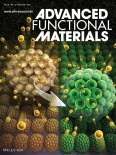
M. Magro, D. Baratella, P. Jakubec, G. Zoppellaro, J. Tucek, C. Aparicio, R. Venerando, G. Sartori, F. Francescato, F. Mion, N. Gabellini, R. Zboril, F. Vianello: Triggering Mechanism for DNA Electrical Conductivity: Reversible Electron Transfer between DNA and Iron Oxide Nanoparticles, ADVANCED FUNCTIONAL MATERIALS, vol. 25, iss. 12, pp. 1822-1831, 2015.
DOI: 10.1002/adfm.201404372, IF = 12.124
Abstract:
A new category of iron oxide nanoparticles (surface active maghemite nanoparticles (SAMNs, γ-Fe2O3)) allows the intimate chemical and electrical contact with DNA by direct covalent binding. On these basis, different DNA-nanoparticle architectures are developed and used as platform for studying electrical properties of DNA. The macroscopic 3D nanobioconjugate, constituted of 5% SAMNs, 70% water, and 25% DNA, shows high stability, electrochemical reversibility and, moreover, electrical conductivity (70–80 Ω cm−1). Reversible electron transfer at the interface between nanoparticles and DNA is unequivocally demonstrated by Mössbauer spectroscopy, which shows the appearance of Fe(II) atoms on nanoparticles following nanobioconjugate formation. This represents the first example of permanent electron exchange by DNA, as well as, of DNA conductivity at a macroscopic scale. Finally, the most probable configuration of the binding is tentatively modeled by density functional theory (DFT/UBP86/6-31+G*), showing the occurrence of electron transfer from the organic orbitals of DNA to surface exposed Fe(III) on nanoparticles, as well as the generation of defects (holes) on the DNA bases. The unequivocal demonstration of DNA conduction provides a new perspective in the five decades long debate about electrical properties of this biopolymer, further suggesting novel approaches for DNA exploitation in nanoelectronics.
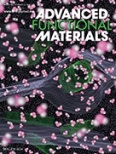
V. Georgakilas, A. Demeslis, E. Ntararas, A. Kouloumpis, K. Dimos, D. Gournis, M. Kocman, M. Otyepka, R. Zbořil: Hydrophilic Nanotube Supported Graphene-Water Dispersible Carbon Superstructure with Excellent Conductivity, ADVANCED FUNCTIONAL MATERIALS vol. 25, iss. 10, 2015.
DOI: 10.1002/adfm.201403801, IF = 12.124
Abstract: In this work, it is shown that the hydrophilic functionalized multiwall carbon nanotubes (MWCNs) can stabilize a large amount of pristine graphene nanosheets in pure water without the assistance of surfactants, ionic liquids, or hydrophilic polymers. Role of stabilizer is conveyed by highly hydrophilic carbon nanotubes, functionalized by dihydroxy phenyl groups, affording a stable dispersion at concentrations as high as 15 mg mL−1. Such multidimensional (2D/1D) graphene/MWCN hybrid is found to be dispersible also in other polar organic solvents such as ethanol, isopropanol, N,N-dimethylformamide, ethylene glycol, and their mixtures. High-resolution transmission microscopy and atomic force microscopy (AFM) including a liquid mode AFM manifest several types of interaction including trapping of multiwalled carbon nanotubes between the graphene sheets or the modification of graphene edges. Molecular dynamic simulations show that formation of an assembly is kinetically controlled. Importantly, the hybrid can be deposited on the paper by drop casting or dispersed in water-soluble polymers resulting in record values of electrical conductivity (sheet resistance up to Rs ≈ 25 Ω sq−1 for free hybrid material and Rs ≈ 1300 Ω sq−1 for a polyvinilalcohol/hybrid composite film). Thus, these novel water dispersible carbon superstructures reveal a high application potential as conductive inks for inkjet printing or as highly conductive polymers.

J. Kasparkova, H. Kostrhunova, O. Novakova, R. Křikavová, J. Vančo, Z. Trávníček, V. Brabec: A Photoactivatable Platinum(IV) Complex Targeting Genomic DNA and Histone Deacetylases, ANGEWANDTE CHEMIE INTERNATIONAL EDITION, vol. 54, iss. 48, pp. 14478-14482, 2015.
DOI: 10.1002/anie.201506533, IF = 11.994
Abstract: We report toxic effects of a photoactivatable platinum(IV) complex conjugated with suberoyl-bis-hydroxamic acid in tumor cells. The conjugate exerts, after photoactivation, two functions: activity as both a platinum(II) anticancer drug and histone deacetylase (HDAC) inhibitor in cancer cells. This approach relies on the use of a PtIV pro-drug, acting by two independent mechanisms of biological action in a cooperative manner, which can be selectively photoactivated to a cytotoxic species in and around a tumor, thereby increasing selectivity towards cancer cells. These results suggest that this strategy is a valuable route to design new platinum agents with higher efficacy for photodynamic anticancer chemotherapy.
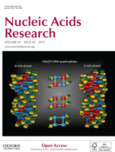
P. Stadlbauer, P. Kührová, P. Banáš, J. Koča, G. Bussi, L. Trantírek, M. Otyepka, J. Šponer: Hairpins participating in folding of human telomeric sequence quadruplexes studied by standard and T-REMD simulations, NUCLEIC ACIDS RES, pp. gkv994, 2015.
DOI: 10.1093/nar/gkv994, IF = 10.162
Abstract: DNA G-hairpins are potential key structures participating in folding of human telomeric guanine quadruplexes (GQ). We examined their properties by standard MD simulations starting from the folded state and long T-REMD starting from the unfolded state, accumulating ∼130 μs of atomistic simulations. Antiparallel G-hairpins should spontaneously form in all stages of the folding to support lateral and diagonal loops, with sub-μs scale rearrangements between them. We found no clear predisposition for direct folding into specific GQ topologies with specific syn/anti patterns. Our key prediction stemming from the T-REMD is that an ideal unfolded ensemble of the full GQ sequence populates all 4096 syn/anti combinations of its four G-stretches. The simulations can propose idealized folding pathways but we explain that such few-state pathways may be misleading. In the context of the available experimental data, the simulations strongly suggest that the GQ folding could be best understood by the kinetic partitioning mechanism with a set of deep competing minima on the folding landscape, with only a small fraction of molecules directly folding to the native fold. The landscape should further include non-specific collapse processes where the molecules move via diffusion and consecutive random rare transitions, which could, e.g. structure the propeller loops.
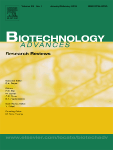
K. Hola, Z. Markova, G. Zoppellaro, J. Tucek, R. Zboril: Tailored functionalization of iron oxide nanoparticles for MRI, drug delivery, magnetic separation and immobilization of biosubstances, BIOTECHNOLOGY ADVANCES, 2015.
DOI: 10.1016/j.biotechadv.2015.02.003, IF = 10.597
Abstract: In this critical review, we outline various covalent and non-covalent approaches for the functionalization of iron oxide nanoparticles (IONPs). Tuning the surface chemistry and design of magnetic nanoparticles are described in relation to their applicability in advanced medical technologies and biotechnologies including magnetic resonance imaging (MRI) contrast agents, targeted drug delivery, magnetic separations and immobilizations of proteins, enzymes, antibodies, targeting agents and other biosubstances. We review synthetic strategies for the controlled preparation of IONPs modified with frequently used functional groups including amine, carboxyl and hydroxyl groups as well as the preparation of IONPs functionalized with other species, e.g., epoxy, thiol, alkane, azide, and alkyne groups. Three main coupling strategies for linking IONPs with active agents are presented: (i) chemical modification of amine groups on the surface of IONPs, (ii) chemical modification of bioactive substances (e.g. with fluorescent dyes), and (iii) the activation of carboxyl groups mainly for enzyme immobilization. Applications for drug delivery using click chemistry linking or biodegradable bonds are compared to non-covalent methods based on polymer modified condensed magnetic nanoclusters. Among many challenges, we highlight the specific surface engineering allowing both therapeutic and diagnostic applications (theranostics) of IONPs and magnetic/metallic hybrid nanostructures possessing a huge potential in biocatalysis, green chemistry, magnetic bioseparations and bioimaging.
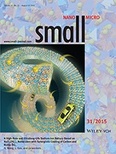
P. Lazar, C. K. Chua, K. Holá, R. Zbořil, M. Otyepka, M. Pumera: Dichlorocarbene-Functionalized Fluorographene: Synthesis and Reaction Mechanism, SMALL, vol. 11, iss. 31, pp. 3790-3796, 2015.
DOI: 10.1002/smll.201500364, IF = 8.643
Abstract: Halogen functionalization of graphene is an important branch of graphene research as it provides opportunities to tailor the band gap and catalytic properties of graphene. Monovalent C–X bond obviates pitfalls of functionalization with atoms of groups 13, 15, and 16, which can introduce various poorly defined groups. Here, the preparation of functionalized graphene containing both fluorine and chlorine atoms is shown. The starting material, fluorographite, undergoes a reaction with dichlorocarbene to provide dichlorocarbene-functionalized fluorographene (DCC-FG). The material is characterized by X-ray photoelectron spectroscopy, Raman spectroscopy, and high-resolution transmission electron microscopy with X-ray dispersive spectroscopy. It is found that the chlorine atoms in DCC-FG are distributed homogeneously over the entire area of the fluorographene sheet. Further density functional theory calculations show that the mechanism of dichlorocarbene attack on fluorographene sheet is a two-step process. Dichlorocarbene detaches fluorine atoms from fluorographene sheet and subsequently adds to the newly formed sp2 carbons. Halogenated graphene consisting of two (or eventually three) types of halogen atoms is envisioned to find its way as new graphene materials with tailored properties.

R. K. Sharma, S. Sharma, S. Dutta, R. Zboril, M. B. Gawande: Silica-nanosphere-based organic–inorganic hybrid nanomaterials: synthesis, functionalization and applications in catalysis, GREEN CHEM., vol. 17, iss. 6, pp. 3207-3230, 2015.
DOI: 10.1039/c5gc00381d IF = 9.125
Abstract: The design and development of organic–inorganic hybrid nanomaterials and their applications in catalysis – an important area in sustainable chemistry – have captivated the attention of several researchers worldwide, as they enable environmentally friendly and benign catalytic processes. In recent years, novel approaches have been adopted to design highly selective nanostructured catalysts by controlling the interaction between the active catalytic species and the support material. There are extensive reports wherein silica nanoparticles (NPs) have been employed as solid supports for the fabrication of organic–inorganic hybrid nanocatalysts, possessing several outstanding features such as high activity and selectivity, excellent stability, efficient recovery and recyclability. Moreover, such quasi-homogeneous catalytic systems are free from diffusion problems that are generally associated with bulk catalytic systems, as these NPs can be dispersed in a wide range of organic solvents, eventually facilitating the accessibility of the substrates to the metal centres. This review attempts to summarise recent progress in the development of hybrid materials based on silica NPs, with special emphasis on the various fabrication strategies employed in previously published reports. Furthermore, a broad overview of the applications of these heterogeneous nanocatalysts in numerous organic transformations, including oxidation, reduction, condensation, amination, coupling, polymerization, addition and many more, is presented. It is believed that the successful applications of such versatile nanocatalytic systems would play a key role in establishing sustainable technologies.
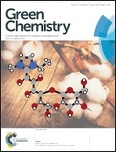
A. S. Burange, M. B. Gawande, F. L. Y. Lam, R. V. Jayaram, R. Luque: Heterogeneously catalyzed strategies for the deconstruction of high density polyethylene: plastic waste valorisation to fuels, GREEN CHEM., vol. 17, iss. 1, pp. 146-156, 2015.
DOI: 10.1039/c4gc01760a, IF = 9.125
Abstract: The plastic industry generates enormous quantities of plastics at projected rates (both production and consumption) which can significantly threaten our environment in terms of plastic waste generation. High density polyethylene (HDPE) is one of the main fractions of municipal solid waste which has a remarkable potential to be valorised into fuels (e.g. bio-oils). Catalytic degradation is an innovative alternative process to transform plastic waste into such value added products. This mini review was aimed to discuss the most relevant and recent catalysts developed for the catalytic degradation of HDPE including metal oxides, sulphated metal oxides, zeolites, nanostructured zeolites, molecular sieves, fluid catalytic cracking (FCC) catalysts, metal carbonates and mesoporous materials for the production of chemicals and fuels (e.g. diesel and gasolines). Activities and selectivities as well as important effects of additives, particle size, catalyst to polymer ratios and also recent approaches for waste management will be discussed.
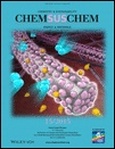
M. B. Gawande: Metal-Catalyzed Reactions in Water. Edited by P. H. Dixneuf, V. Cadierno, CHEMSUSCHEM vol. 8, iss. 15, pp. 2569-2569, 2015.
DOI: 10.1002/cssc.201500663, IF = 7.226
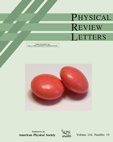
K. Lemr, K. Bartkiewicz, A. Černoch, M. Dušek, J. Soubusta: Experimental Implementation of Optimal Linear-Optical Controlled-Unitary Gates, PHYS. REV. LETT. vol. 114, iss. 15, 2015.
DOI: 10.1103/physrevlett.114.153602, IF = 8.462
Abstract: We show that it is possible to reduce the number of two-qubit gates needed for the construction of an arbitrary controlled-unitary transformation by up to 2 times using a tunable controlled-phase gate. On the platform of linear optics, where two-qubit gates can only be achieved probabilistically, our method significantly reduces the amount of components and increases success probability of a two-qubit gate. The experimental implementation of our technique presented in this Letter for a controlled single-qubit unitary gate demonstrates that only one tunable controlled-phase gate is needed instead of two standard controlled-not gates. Thus, not only do we increase the success probability by about 1 order of magnitude (with the same resources), but also avoid the need for conducting quantum nondemolition measurement otherwise required to join two probabilistic gates. Subsequently, we generalize our method to a higher order, showing that n-times controlled gates can be optimized by replacing blocks of controlled-not gates with tunable controlled-phase gates.
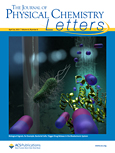
M. Dubecký, E. Otyepkova, P. Lazar, F. Karlicky, M. Petr, K. Cepe, P. Banáš, R. Zboril, M. Otyepka: Reactivity of Fluorographene: A Facile Way Towards Graphene Derivatives, J. PHYS. CHEM. LETT., vol. 6, iss. 8, pp. 1430-1434, 2015.
DOI: 10.1021/acs.jpclett.5b00565, IF = 9.353
Abstract: Fluorographene (FG) is a two-dimensional graphene derivative with promising application potential, however, its reactivity is not understood. We have systematically explored its reactivity in vacuum and polar environments. The C-F bond dissociation energies for homo- and heterolytic cleavage are above 100 kcal/mol, but the barrier of SN2 substitution is significantly lower. For example, the experimentally determined activation barrier of FG reaction with NaOH in acetone equals to 14±5 kcal/mol. The considerable reactivity of FG indicates that it is a viable precursor for the synthesis of graphene derivatives and cannot be regarded as a chemical counterpart of Teflon.
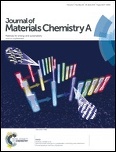
M. B. Gawande, R. Zboril, V. Malgras, Y. Yamauchi: Integrated nanocatalysts: a unique class of heterogeneous catalysts, J. MATER. CHEM. A, vol. 3, iss. 16, pp. 8241-8245, 2015.
DOI: 10.1039/c5ta00119f, IF = 8.867
Abstract: Nanoparticles are regarded as attractive candidates for heterogeneous catalysis in various imperative catalytic processes as they are now easy to prepare with a desired size, structure, morphology and composition. Advanced integrated nanocatalysts (INCs) are considered to be a new class of heterogeneous catalysts distinctly different from the conventional ones. INCs are multicomponent materials with a nanoarchitecture typically designed by incorporating nanoparticles into a defined matrix. Thus, INCs can exhibit various morphologies depending on the targeted catalytic process and the type of the immobilized catalyst. In this highlight, we would like to demonstrate the sophisticated nanoarchitecture, synthetic approaches and unique catalytic properties of specifically selected INCs.
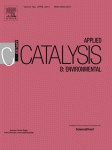
S. Kment, Z. Hubicka, J. Krysa, D. Sekora, M. Zlamal, J. Olejnicek, M. Cada, P. Ksirova, Z. Remes, P. Schmuki, E. Schubert and R. Zboril: "On the improvement of PEC activity of hematite thin films deposited by high-power pulsed magnetron sputtering method", APPLIED CATALYSIS B: ENVIRONMENTAL, vol. 165, pp. 344-350, 2015.
DOI: 10.1016/j.apcatb.2014.10.015, IF = 9.446
Abstract: The work deals with fabrication of iron oxide (α-Fe2O3) hematite films by a novel high-power impulse magnetron sputtering method (HiPIMS). Hematite is regarded as a highly promising material for sustainable production of hydrogen via photoelectrochemical (PEC) water splitting. Some of the crucial issues of hematite are a large overpotential needed to develop the water oxidation photocurrent onset, high extent of surface defects acting as traps, and a short diffusion length (2–4 nm) of photogenerated holes. We report on minimizing these limits by deposition of highly photoactive nanocrystalline very thin (∼30 nm) absorbing hematite films by HiPIMS and their passivation by ultra-thin (∼2 nm) atomic layer deposited (ALD) isocrystalline alumina oxide (α-Al2O3) films. A new approach of one-step annealing of this bilayer system is introduced. The films were judged on the basis of physical properties such as crystalline structure, optical absorption, surface topography, and electronic properties. The functional properties were investigated under simulated photoelectrochemical (PEC) water-splitting conditions. The shift by 1 V vs. RHE and the maximal photocurrent value of 0.48 mA cm−2 at 1.23 V vs. RHE were achieved.
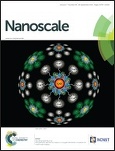
V. Georgakilas, K. Vrettos, K. Katomeri, A. Kouloumpis, K. Dimos, D. Gournis, R. Zboril: Highly dispersible disk-like graphene nanoflakes, NANOSCALE, 2015.
DOI: 10.1039/c5nr04422g, IF = 7.367
Abstract: We present the preparation of disk-like graphene nanoflakes, highly dispersible in dimethylformamide (DMF), with uniform size and thickness. The preparation procedure includes an overnight mild sonication of natural graphite in DMF, followed by a purification step using ultra-centrifugation. The mean diameter of the as produced well defined round shaped graphene nanoflakes is about 100 nm and they consisted of less than twenty graphenic layers.
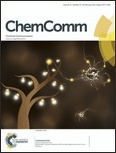
Y. Wang, S.Kalytchuk, L. Wang, O. Zhovtiuk, K. Cepe, R. Zboril and A. Rogach: "Carbon dot hybrids with oligomeric silsesquioxane: Solid-state luminophores with high photoluminescence quantum yield and applicability in white light emitting devices", CHEM. COMMUN., vol. 51, iss. 14, pp. 2950-2953, 2015.
DOI: 10.1039/C4CC09589H, IF = 6.319
Abstract: We present a simple approach towards highly efficient solid-state luminophores with strong deep blue emission and a record high photoluminescence quantum yield of 60% by embedding water-soluble N,S-co-doped carbon dots into a polyhedral oligomeric silsesquioxane (POSS) matrix.
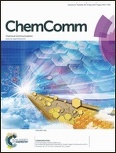
G. Fabre, I. Bayach, K. Berka, M. Paloncýová, M. Starok, C. Rossi, J.L. Duroux, M. Otyepka and P. Trouillas: "Synergism of Antioxidant Action of Vitamins E, C and Quercetin Is Related to Formation of Molecular Associations in Biomembranes", CHEM. COMMUN., vol. 51, iss. 36, pp. 7713-7716, 2015.
DOI: 10.1039/C4CC09589H, IF = 6.319
Abstract: Vitamins E, C and polyphenols (flavonoids and non-flavonoids) are major natural antioxidants capable of preventing damage generated by oxidative stress. Here we show the capacity of these antioxidants to form non-covalent association within lipid bilayers close to the membrane/cytosol interface. Antioxidant regeneration is significantly enhanced in these complexes.
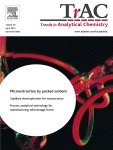
R. Knob, C. Kulsing, R. I. Boysen, M. Macka, M. T. Hearn: Surface-area expansion with monolithic open tubular columns, TRAC TRENDS IN ANALYTICAL CHEMISTRY vol. 67, pp. 16-25, 2015.
DOI: 10.1016/j.trac.2014.12.004, IF = 8.442
Abstract: This review covers various approaches now available to enhance the surface area of stationary phases fabricated in the porous layer open tubular (PLOT) format for use in liquid-phase-based separation techniques and catalytic applications. We focus attention on the preparation of porous polymers (monoliths), since many procedures have already been described related to the production of PLOT columns with distinctive properties and coatings at the column wall. We discuss advantages and limitations of these methodologies with regard to materials used and the demonstrated application.
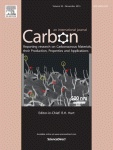
M. Baikousi, Y. Georgiou, C. Daikopoulos, A. B. Bourlinos, J. Filip, R. Zbořil, Y. Deligiannakis, M. A. Karakassides: Synthesis and characterization of robust zero valent iron/mesoporous carbon composites and their applications in arsenic removal, CARBON vol. 93, pp. 636-647, 2015.
DOI: 10.1016/j.carbon.2015.05.081, IF = 6.337
Abstract: Nanoscale zero valent iron particles (nZVI) have been developed by in situ reduction of Fe3+ ions onto a mesoporous type of carbon matrix – Starch-Derived Mesoporous Carbonaceous Material previously reported and marketed commercially as “Starbon”. The obtained nZVI/Starbon hybrid material exhibits homogeneous distribution of nZVI (10–20 nm) within the carbon matrix, surface area of 141 m2/g and a total iron loading of 1 mmol per gram of the composite, in accordance with transmission electron microscopy (TEM), X-ray diffraction (XRD), N2 adsorption–desorption measurements, Infrared (IR)/Raman spectroscopy and Thermal gravimetric (TG)/Differential Thermal analysis (DTA). Electron Paramagnetic Resonance (EPR) and proton binding measurements show that the nanoparticles have a core–shell structure with iron(III) oxide/hydroxide shell due to partial air-oxidation of nZVI and the composite exhibits four different types of proton binding groups. Most importantly, the nZVI/Starbon hybrid has been tested as absorbent for As(III) removal showing a total removal of 358 μmol (26.8 mg) of As(III) per gram of the composite at pH = 7. We also discuss the principal role of surface OH groups of iron oxide in arsenic uptake and the crucial effect of pH on removal efficiency.

M. d’Halluin, T. Mabit, N. Fairley, V. Fernandez, M. B. Gawande, E. Le Grognec, F. Felpin: Graphite-supported ultra-small copper nanoparticles – Preparation, characterization and catalysis applications, CARBON vol. 93, pp. 974-983, 2015.
DOI: 10.1016/j.carbon.2015.06.017, IF = 6.337
Abstract: A convenient preparation of graphite-supported ultra-small copper nanoparticles (Cu NPs) has been developed. Ultra-small Cu NPs, generated by reduction of Cu(OAc)2 with H2, were well dispersed onto the graphite support and possess a very narrow distribution in size, ranging from 1.6 to 2.6 nm. The catalytic activity of these ultra-small graphite-supported Cu NPs was evaluated for the Meerwein arylation of pyrroles and the multicomponent synthesis of 1,2,3-triazoles via click reaction.
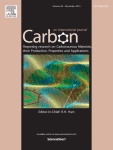
P. Lazar, E. Otyepková, F. Karlický, K. Čépe, M. Otyepka: The surface and structural properties of graphite fluoride, CARBON, vol. 94, pp. 804-809, 2015.
DOI: 10.1016/j.carbon.2015.07.064, IF = 6.337
Abstract: The structural properties of graphite fluoride are not well characterized despite many experimental and theoretical studies. Computational investigations have indicated the existence of several possible stacking sequences for this material, but the methods used were incapable of adequately describing the dispersive interactions between graphite-like layers. We studied the structural and surface properties of graphite fluoride using the random phase approximation method, which provides dispersive (van der Waals) interactions with the correct asymptotic decay. The chair conformation with the AA stacking sequence is predicted to be the most stable structure, having lattice parameters of a = 2.58 Å, and c = 5.75 Å. The energetic difference between AB and ABC stacking is small, so a statistical ensemble of several stacking arrangements can be expected in graphite fluoride samples. The energy needed for the exfoliation of graphite fluoride into individual CF layers is 190 mJ/m2, which is lower than the corresponding energy for graphite. The predicted surface energy of graphite fluoride is 100 mJ/m2. We also measured the surface energy of graphite fluoride powder experimentally using inverse gas chromatography, yielding a value of 79 +/- 7 mJ/m2 that agreed well with the computational result.

A. B. Bourlinos, G. Trivizas, M. A. Karakassides, M. Baikousi, A. Kouloumpis, D. Gournis, A. Bakandritsos, K. Hola, O. Kozak, R. Zboril, I. Papagiannouli, P. Aloukos and S. Couris: "Green and simple route toward boron doped carbon dots with significantly enhanced non-linear optical properties", CARBON, vol. 83, pp. 173-179, 2015.
DOI: 10.1016/j.carbon.2014.11.032, IF = 6.337
Abstract: Microwave heating of an aqueous solution of citric acid, boric acid and urea affords boron-doped carbon dots (C-dots) with ultrafine size (2–6 nm) and quasi-spherical shape. The new dots are freely dispersible in water providing stable, optically transparent dispersions with olive-green color. The optical properties of the dots were studied in respect to their photoluminescence and nonlinear optical response. Boron-doped C-dots exhibit absorption–emission features that strongly resemble the optical properties of conventional quantum dots with a strong blue fluorescence under UV excitation. Importantly, we demonstrate for the first time that boron doping in C-dots causes a significant enhancement of the nonlinear optical response compared to un-doped carbon dots. This result is in line with previous studies reporting a similar effect on the non-linear optical properties of boron-doped silicon nanocrystals.
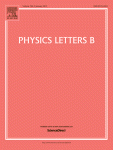
ATLAS Collaboration: "Search for s -channel single top-quark production in proton–proton collisions at  with the ATLAS detector", PHYSICS LETTERS B, vol. 740, pp. 118-136, 2015.
with the ATLAS detector", PHYSICS LETTERS B, vol. 740, pp. 118-136, 2015.
DOI: 10.1016/j.physletb.2014.11.042, IF = 4.807
Abstract: This Letter presents a search at the LHC for s-channel single top-quark production in proton–proton collisions at a centre-of-mass energy of 8 TeV. The analyzed data set was recorded by the ATLAS detector and corresponds to an integrated luminosity of 20.3 fb−1. Selected events contain one charged lepton, large missing transverse momentum and exactly two b-tagged jets. A multivariate event classifier based on boosted decision trees is developed to discriminate s-channel single top-quark events from the main background contributions. The signal extraction is based on a binned maximum-likelihood fit of the output classifier distribution. The analysis leads to an upper limit on the s -channel single top-quark production cross-section of 14.6 pb at the 95% confidence level. The fit gives a cross-section of , consistent with the Standard Model expectation.

ATLAS Collaboration: "Search for the Xb and other hidden-beauty states in the π+π−ϒ(1S) channel at ATLAS", PHYSICS LETTERS B, vol. 740, pp. 199-217, 2015.
DOI: 10.1016/j.physletb.2014.11.055, IF = 4.807
Abstract: This Letter presents a search for a hidden-beauty counterpart of the X(3872) in the mass ranges of 10.05–10.31 GeV and 10.40–11.00 GeV, in the channel , using 16.2 fb−1 of pp collision data collected by the ATLAS detector at the LHC. No evidence for new narrow states is found, and upper limits are set on the product of the Xb cross section and branching fraction, relative to those of the

ATLAS Collaboration: "Search for H→γγ produced in association with top quarks and constraints on the Yukawa coupling between the top quark and the Higgs boson using data taken at 7 TeV and 8 TeV with the ATLAS detector", PHYSICS LETTERS B, vol. 740, pp. 222-242, 2015.
DOI: 10.1016/j.physletb.2014.11.049, IF = 4.807
Abstract: A search is performed for Higgs bosons produced in association with top quarks using the diphoton decay mode of the Higgs boson. Selection requirements are optimized separately for leptonic and fully hadronic final states from the top quark decays. The dataset used corresponds to an integrated luminosity of 4.5 fb-1 of proton–proton collisions at a center-of-mass energy of 7 TeV and 20.3 fb-1 at 8 TeV recorded by the ATLAS detector at the CERN Large Hadron Collider. No significant excess over the background prediction is observed and upper limits are set on the production cross section. The observed exclusion upper limit at 95% confidence level is 6.7 times the predicted Standard Model cross section value. In addition, limits are set on the strength of the Yukawa coupling between the top quark and the Higgs boson, taking into account the dependence of the and tH cross sections as well as the branching fraction on the Yukawa coupling. Lower and upper limits at 95% confidence level are set at −1.3 and +8.0 times the Yukawa coupling strength in the Standard Model.
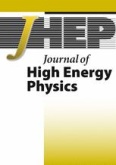
ATLAS Collaboration: "Search for the decay of the Standard Model Higgs boson in associated (W/Z)H production with the ATLAS detector", JOURNAL OF HIGH ENERGY PHYSICS iss. 1, 2015.
DOI: 10.1007/JHEP01(2015)069, IF = 6.063
Abstract: A search for the decay of the Standard Model Higgs boson is performed with the ATLAS experiment using the full dataset recorded at the LHC in Run 1. The integrated luminosities used are 4.7 and 20.3 fb−1 from =7 and 8 TeV, respectively. The processes considered are associated (W/Z)H production, where W → eν/μν, Z → ee/μμ and Z → νν. The observed (expected) deviation from the background-only hypothesis corresponds to a significance of 1.4 (2.6) standard deviations and the ratio of the measured signal yield to the Standard Model expectation is found to be μ = 0.52 ± 0.32 (stat.) ± 0.24 (syst.) for a Higgs boson mass of 125.36 GeV. The analysis procedure is validated by a measurement of the yield of (W/Z)Z production with

ATLAS Collaboration: "Searches for heavy long-lived charged particles with the ATLAS detector in proton-proton collisions at
s√=8
TeV", JOURNAL OF HIGH ENERGY PHYSICS iss. 1, 2015.
DOI: 10.1007/JHEP01(2015)068, IF = 6.063
Abstract: Searches for heavy long-lived charged particles are performed using a data sample of 19.1 fb−1 from proton-proton collisions at a centre-of-mass energy of

ATLAS Collaboration: "Measurement of the tt production cross-section as a function of jet multiplicity and jet transverse momentum in 7 TeV proton-proton collisions with the ATLAS detector", JOURNAL OF HIGH ENERGY PHYSICS iss. 1, 2015.
DOI: 10.1007/JHEP01(2015)020, IF = 6.063
Abstract: The
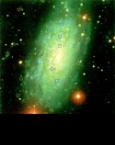
Pierre Auger Collaboration: Large scale distribution of ultra high energy cosmic rays detected at the pierre auger observatory with zenith angles up to 80°, APJ vol. 802, iss. 2, pp. 111, 2015.
DOI: 10.1088/0004-637x/802/2/111, IF = 5.533
Abstract: We present the results of an analysis of the large angular scale distribution of the arrival directions of cosmic rays with energy above 4 EeV detected at the Pierre Auger Observatory including for the first time events with zenith angle between 60° and 80°. We perform two Rayleigh analyses, one in the right ascension and one in the azimuth angle distributions, that are sensitive to modulations in right ascension and declination, respectively. The largest departure from isotropy appears in the E > 8 EeV energy bin, with an amplitude for the first harmonic in right ascension r1α= (4.4±1.0) x 10-2, that has a chance probability P(≥r1α) = 6.4 x 10-5, reinforcing the hint previously reported with vertical events alone.

Pierre Auger Collaboration: Searches for anisotropies in the arrival directions of the highest energy cosmic rays detected by the Pierre Auger Observatory, APJ vol. 804, iss. 1, pp. 15, 2015.
DOI: 10.1088/0004-637x/804/1/15, IF = 5.533
Abstract: We analyze the distribution of arrival directions of ultra-high-energy cosmic rays recorded at the Pierre Auger Observatory in 10 years of operation. The data set, about three times larger than that used in earlier studies, includes arrival directions with zenith angles up to 80°, thus covering from -90° to +45° in declination. After updating the fraction of events correlating with the active galactic nuclei (AGNs) in the Véron-Cetty and Véron catalog, we subject the arrival directions of the data with energies in excess of 40 EeV to different tests for anisotropy. We search for localized excess fluxes, self-clustering of event directions at angular scales up to 30°, and different threshold energies between 40 and 80 EeV. We then look for correlations of cosmic rays with celestial structures both in the Galaxy (the Galactic Center and Galactic Plane) and in the local universe (the Super-Galactic Plane). We also examine their correlation with different populations of nearby extragalactic objects: galaxies in the 2MRS catalog, AGNs detected by Swift-BAT, radio galaxies with jets, and the Centaurus A (Cen A) galaxy. None of the tests show statistically significant evidence of anisotropy. The strongest departures from isotropy (post-trial probability ~ 1.4%) are obtained for cosmic rays with E> 58 EeV in rather large windows around Swift AGNs closer than 130 Mpc and brighter than 1044> erg s−1> (18° radius), and around the direction of Cen A (15° radius).
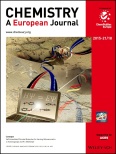
J. Řezáč, D. Nachtigallová, F. Mazzoni, M. Pasquini, G. Pietraperzia, M. Becucci, K. Müller-Dethlefs, P. Hobza: Binding Energies of the π-Stacked Anisole Dimer: New Molecular Beam-Laser Spectroscopy Experiments and CCSD(T) Calculations, CHEMISTRY - A EUROPEAN JOURNAL vol. 21, iss. 18, pp. 6740-6746, 2015.
DOI: 10.1002/chem.201406134, IF = 5.317
Abstract: Among noncovalent interactions, π–π stacking is a very important binding motif governed mainly by London dispersion. Despite its importance, for instance, for the structure of bio-macromolecules, the direct experimental measurement of binding energies in π–π stacked complexes has been elusive for a long time. Only recently, an experimental value for the binding energy of the anisole dimer was presented, determined by velocity mapping ion imaging in a two-photon resonant ionisation molecular beam experiment. However, in that paper, a discrepancy was already noted between the obtained experimental value and a theoretical estimate. Here, we present an accurate recalculation of the binding energy based on the combination of the CCSD(T)/CBS interaction energy and a DFT-D3 vibrational analysis. This proves unambiguously that the previously reported experimental value is too high and a new series of measurements with a different, more sensitive apparatus was performed. The new experimental value of 1800±100 cm−1 (5.15±0.29 kcal mol−1) is close to the present theoretical prediction of 5.04±0.40 kcal mol−1. Additional calculations of the properties of the cationic and excited states involved in the photodissociation of the dimer were used to identify and rationalise the difficulties encountered in the experimental work.

J. Tuček, L. Machala, S. Ono, A. Namai, M. Yoshikiyo, K. Imoto, H. Tokoro, S. Ohkoshi, R. Zbořil: Zeta-Fe2O3 – A new stable polymorph in iron(III) oxide family, SCIENTIFIC REPORTS vol. 5, pp. 15091, 2015.
DOI: 10.1038/srep15091, IF=4.259
Abstract: Iron(III) oxide shows a polymorphism, characteristic of existence of phases with the same chemical composition but distinct crystal structures and, hence, physical properties. Four crystalline phases of iron(III) oxide have previously been identified: α-Fe2O3 (hematite), β-Fe2O3, γ-Fe2O3 (maghemite), and ε-Fe2O3. All four iron(III) oxide phases easily undergo various phase transformations in response to heating or pressure treatment, usually forming hexagonal α-Fe2O3, which is the most thermodynamically stable Fe2O3 polymorph under ambient conditions. Here, from synchrotron X-ray diffraction experiments, we report the formation of a new iron(III) oxide polymorph that we have termed ζ-Fe2O3 and which evolved during pressure treatment of cubic β-Fe2O3 ( space group) at pressures above 30 GPa. Importantly, ζ-Fe2O3 is maintained after pressure release and represents the first monoclinic Fe2O3 polymorph (I2/a space group) that is stable at atmospheric pressure and room temperature. ζ-Fe2O3 behaves as an antiferromagnet with a Néel transition temperature of ~69 K. The complex mechanism of pressure-induced transformation of β-Fe2O3, involving also the formation of Rh2O3-II-type Fe2O3 and post-perovskite-Fe2O3 structure, is suggested and discussed with respect to a bimodal size distribution of precursor nanoparticles.
space group) at pressures above 30 GPa. Importantly, ζ-Fe2O3 is maintained after pressure release and represents the first monoclinic Fe2O3 polymorph (I2/a space group) that is stable at atmospheric pressure and room temperature. ζ-Fe2O3 behaves as an antiferromagnet with a Néel transition temperature of ~69 K. The complex mechanism of pressure-induced transformation of β-Fe2O3, involving also the formation of Rh2O3-II-type Fe2O3 and post-perovskite-Fe2O3 structure, is suggested and discussed with respect to a bimodal size distribution of precursor nanoparticles.

O. Haderka, R. Machulka, J. Peřina, A. Allevi, M. Bondani: Spatial and spectral coherence in propagating high-intensity twin beams, SCIENTIFIC REPORTS vol. 5, pp. 14365, 2015.
DOI: 10.1038/srep14365, IF=4.259
Abstract: The novel field-induced single-molecule magnet based on a tetracoordinate mononuclear heteroleptic Co(II) complex involving two heterocyclic benzimidazole (bzi) and two thiocyanido ligands, [Co(bzi)2(NSC)2], (CoL4), was prepared and thoroughly characterized. The analysis of AC susceptibility data resulted in the spin reversal energy barrier U = 14.7 cm−1, which is in good agreement with thSpatial and spectral coherence of high-intensity twin-beam states propagating from the near-field to the far-field configurations is experimentally investigated by measuring intensity auto- and cross-correlation functions. The experimental setup includes a moving crystal and an iCCD camera placed at the output plane of an imaging spectrometer. Evolution from the tight near-field spatial position cross-correlations to the far-field momentum cross-correlations, accompanied by changeless spectral cross-correlations, is observed. Intensity autocorrelation functions and beam profiles are also monitored as they provide the number of degrees of freedom constituting the down-converted beams. The strength of intensity cross-correlations as an alternative quantity for the determination of the number of degrees of freedom is also measured. The relation between the beam coherence and the number of degrees of freedom is discussed.

I. Nemec, R. Herchel, Z. Trávníček: Suppressing of slow magnetic relaxation in tetracoordinate Co(II) field-induced single-molecule magnet in hybrid material with ferromagnetic barium ferrite, SCIENTIFIC REPORTS vol. 5, pp. 10761, 2015.
DOI: 10.1038/srep10761, IF=4.259
Abstract: The novel field-induced single-molecule magnet based on a tetracoordinate mononuclear heteroleptic Co(II) complex involving two heterocyclic benzimidazole (bzi) and two thiocyanido ligands, [Co(bzi)2(NSC)2], (CoL4), was prepared and thoroughly characterized. The analysis of AC susceptibility data resulted in the spin reversal energy barrier U = 14.7 cm−1, which is in good agreement with theoretical prediction, Utheor. = 20.2 cm−1, based on axial zero-field splitting parameter D = −10.1 cm−1 fitted from DC magnetic data. Furthermore, mutual interactions between CoL4 and ferromagnetic barium ferrite BaFe12O19 (BaFeO) in hybrid materials resulted in suppressing of slow relaxation of magnetization in CoL4 for 1:2, 1:1 and 2:1 mass ratios of CoL4 and BaFeO despite the lack of strong magnetic interactions between two magnetic phases.
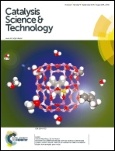
A. K. Rathi, M. B. Gawande, V. Ranc, J. Pechousek, M. Petr, K. Cepe, R. S. Varma, R. Zboril: Continuous flow transfer hydrogenation of nitroarenes, azides and alkenes using maghemite-Pd nanocomposites, CATAL. SCI. TECHNOL., Accepted Manuscript, 2015.
DOI: 10.1039/c5cy00956a, IF = 5.773
Abstract: Well decorated maghemite-supported ultra-fine Pd (1-3 nm) nanoparticles, prepared by a simple co-precipitation method, find application in the catalytic continuous flow hydrogenation of nitroarenes, azides, and alkenes wherein they play an important role in reduction of various functional groups on the surface of maghemite with low catalyst loading (~6 wt%). The salient features of the protocol include expeditious formation of reduced products in high yields at near ambient conditions with recycling of the catalyst (up to 12 cycles) without any loss in selectivity and yield; barely noticeable Pd metal leaching was detected after the reactions.
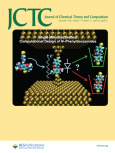
M. Zgarbová, J. Šponer, M. Otyepka, T. E. Cheatham, R. Galindo-Murillo, P. Jurečka: Refinement of the Sugar–Phosphate Backbone Torsion Beta for AMBER Force Fields Improves the Description of Z- and B-DNA, J. CHEM. THEORY COMPUT. vol. 11, iss. 12, pp. 5723-5736, 2015.
DOI: 10.1021/acs.jctc.5b00716, IF = 5.245
Abstract:
Z-DNA duplexes are a particularly complicated test case for current force fields. We performed a set of explicit solvent molecular dynamics (MD) simulations with various AMBER force field parametrizations including our recent refinements of the ε/ζ and glycosidic torsions. None of these force fields described the ZI/ZII and other backbone substates correctly, and all of them underpredicted the population of the important ZI substate. We show that this underprediction can be attributed to an inaccurate potential for the sugar–phosphate backbone torsion angle β. We suggest a refinement of this potential, βOL1, which was derived using our recently introduced methodology that includes conformation-dependent solvation effects. The new potential significantly increases the stability of the dominant ZI backbone substate and improves the overall description of the Z-DNA backbone. It also has a positive (albeit small) impact on another important DNA form, the antiparallel guanine quadruplex (G-DNA), and improves the description of the canonical B-DNA backbone by increasing the population of BII backbone substates, providing a better agreement with experiment. We recommend using βOL1 in combination with our previously introduced corrections, εζOL1 and χOL4, (the combination being named OL15) as a possible alternative to the current β torsion potential for more accurate modeling of nucleic acids.
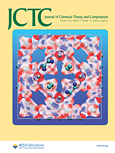
R. Sedlak, M. H. Kolář, P. Hobza: Polar Flattening and the Strength of Halogen Bonding, J. CHEM. THEORY COMPUT. vol. 11, iss. 10, pp. 4727-4732, 2015.
DOI: 10.1021/acs.jctc.5b00687, IF = 5.245
Abstract: The effect of polar flattening on the stability of 32 halogen-bonded complexes was investigated by utilizing CCSD(T)/CBS, DFT, and DFT-SAPT/CBS methods. It is shown that the value of polar flattening increases with the decreasing value of studied isodensity. For the complexes investigated, the polar flattening based on the isodensity of 0.001 au reaches 0.2–0.3 Å and 10–15% in absolute and relative values, respectively. These geometrical changes induce differences in the stabilization energy up to 20%.
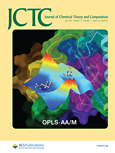
J. Řezáč, Y. Huang, P. Hobza, G. J. O. Beran: Benchmark Calculations of Three-Body Intermolecular Interactions and the Performance of Low-Cost Electronic Structure Methods, J. CHEM. THEORY COMPUT. vol. 11, iss. 7, pp. 3065-3079, 2015.
DOI: 10.1021/acs.jctc.5b00281, IF = 5.245
Abstract: Many-body noncovalent interactions are increasingly important in large and/or condensed-phase systems, but the current understanding of how well various models predict these interactions is limited. Here, benchmark complete-basis set coupled cluster singles, doubles, and perturbative triples (CCSD(T)) calculations have been performed to generate a new test set for three-body intermolecular interactions. This “3B-69” benchmark set includes three-body interaction energies for 69 total trimer structures, consisting of three structures from each of 23 different molecular crystals. By including structures that exhibit a variety of intermolecular interactions and packing arrangements, this set provides a stringent test for the ability of electronic structure methods to describe the correct physics involved in the interactions. Both MP2.5 (the average of second- and third-order Møller–Plesset perturbation theory) and spin-component-scaled CCSD for noncovalent interactions (SCS-MI-CCSD) perform well. MP2 handles the polarization aspects reasonably well, but it omits three-body dispersion. In contrast, many widely used density functionals corrected with three-body D3 dispersion correction perform comparatively poorly. The primary difficulty stems from the treatment of exchange and polarization in the functionals rather than from the dispersion correction, though the three-body dispersion may also be moderately underestimated by the D3 correction.
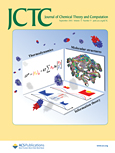
J. Hostaš, D. Jakubec, R. A. Laskowski, R. Gnanasekaran, J. Řezáč, J. Vondrášek, P. Hobza: Representative Amino Acid Side-Chain Interactions in Protein–DNA Complexes: A Comparison of Highly Accurate Correlated Ab Initio Quantum Mechanical Calculations and Efficient Approaches for Applications to Large Systems , J. CHEM. THEORY COMPUT. vol. 11, iss. 9, pp. 4086-4092, 2015.
DOI: 10.1021/acs.jctc.5b00398, IF = 5.245
Abstract: Representative pairs of amino acid side chains and nucleic acid bases extracted from available high-quality structures of protein–DNA complexes were analyzed using a range of computational methods. CCSD(T)/CBS interaction energies were calculated for the chosen 272 pairs. These reference interaction energies were used to test the MP2.5/CBS, MP2.X/CBS, MP2-F12, DFT-D3, PM6, and Amber force field methods. Method MP2.5 provided excellent agreement with reference data (root-mean-square error (RMSE) of 0.11 kcal/mol), which is more than 1 order of magnitude faster than the CCSD(T) method. When MP2-F12 and MP2.5 were combined, the results were within reasonable accuracy (0.20 kcal/mol), with a computational savings of almost 2 orders of magnitude. Therefore, this method is a promising tool for accurate calculations of interaction energies in protein–DNA motifs of up to ∼100 atoms, for which CCSD(T)/CBS benchmark calculations are not feasible. B3-LYP-D3 calculated with def2-TZVPP and def2-QZVP basis sets yielded sufficiently good results with a reasonably small RMSE. This method provided better results for neutral systems, whereas positively charged species exhibited the worst agreement with the benchmark data. The Amber force field yielded unbalanced results—performing well for systems containing nonpolar amino acids but severely underestimating interaction energies for charged complexes. The semiempirical PM6 method with corrections for hydrogen bonding and dispersion energy (PM6-D3H4) exhibited considerably smaller error than the Amber force field, which makes it an effective tool for modeling extended protein–ligand complexes (of up to 10 000 atoms).
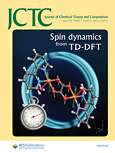
S. Haldar, P. Kührová, P. Banáš, V. Spiwok, J. Šponer, P. Hobza, M. Otyepka: Insights into Stability and Folding of GNRA and UNCG Tetraloops Revealed by Microsecond Molecular Dynamics and Well-Tempered Metadynamics, J. CHEM. THEORY COMPUT. vol. 11, iss. 8, pp. 3866-3877, 2015.
DOI: 10.1021/acs.jctc.5b00010, IF = 5.245
Abstract: RNA hairpins capped by 5′-GNRA-3′ or 5′-UNCG-3′ tetraloops (TLs) are prominent RNA structural motifs. Despite their small size, a wealth of experimental data, and recent progress in theoretical simulations of their structural dynamics and folding, our understanding of the folding and unfolding processes of these small RNA elements is still limited. Theoretical description of the folding and unfolding processes requires robust sampling, which can be achieved by either an exhaustive time scale in standard molecular dynamics simulations or sophisticated enhanced sampling methods, using temperature acceleration or biasing potentials. Here, we study structural dynamics of 5′-GNRA-3′ and 5′-UNCG-3′ TLs by 15-μs-long standard simulations and a series of well-tempered metadynamics, attempting to accelerate sampling by bias in a few chosen collective variables (CVs). Both methods provide useful insights. The unfolding and refolding mechanisms of the GNRA TL observed by well-tempered metadynamics agree with the (reverse) folding mechanism suggested by recent replica exchange molecular dynamics simulations. The orientation of the glycosidic bond of the GL4 nucleobase is critical for the UUCG TL folding pathway, and our data strongly support the hypothesis that GL4-anti forms a kinetic trap along the folding pathway. Along with giving useful insight, our study also demonstrates that using only a few CVs apparently does not capture the full folding landscape of the RNA TLs. Despite using several sophisticated selections of the CVs, formation of the loop appears to remain a hidden variable, preventing a full convergence of the metadynamics. Finally, our data suggest that the unfolded state might be overstabilized by the force fields used.
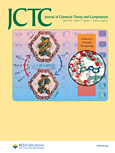
M. Krepl, M. Havrila, P. Stadlbauer, P. Banas, M. Otyepka, J. Pasulka, R. Stefl, J. Sponer: Can We Execute Stable Microsecond-Scale Atomistic Simulations of Protein–RNA Complexes?, J. CHEM. THEORY COMPUT. vol. 11, iss. 3, pp. 1220-1243, 2015.
DOI: 10.1021/ct5008108, IF = 5.245
Abstract: We report over 30 μs of unrestrained molecular dynamics simulations of six protein–RNA complexes in explicit solvent. We utilize the AMBER ff99bsc0χOL3 RNA force field combined with the ff99SB protein force field and its more recent ff12SB version with reparametrized side-chain dihedrals. The simulations show variable behavior, ranging from systems that are essentially stable to systems with progressive deviations from the experimental structure, which we could not stabilize anywhere close to the starting experimental structure. For some systems, microsecond-scale simulations are necessary to achieve stabilization after initial sizable structural perturbations. The results show that simulations of protein–RNA complexes are challenging and every system should be treated individually. The simulations are affected by numerous factors, including properties of the starting structures (the initially high force field potential energy, resolution limits, conformational averaging, crystal packing, etc.), force field imbalances, and real flexibility of the studied systems. These factors, and thus the simulation behavior, differ from system to system. The structural stability of simulated systems does not correlate with the size of buried interaction surface or experimentally determined binding affinities but reflects the type of protein–RNA recognition. Protein–RNA interfaces involving shape-specific recognition of RNA are more stable than those relying on sequence-specific RNA recognition. The differences between the protein force fields are considerably smaller than the uncertainties caused by sampling and starting structures. The ff12SB improves description of the tyrosine side-chain group, which eliminates some problems associated with tyrosine dynamics.
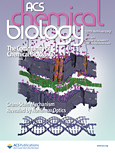
J. Fanfrlík, F. X. Ruiz, A. Kadlčíková, J. Řezáč, A. Cousido-Siah, A. Mitschler, S. Haldar, M. Lepšík, M. H. Kolář, P. Majer, A. D. Podjarny, P. Hobza: The Effect of Halogen-to-Hydrogen Bond Substitution on Human Aldose Reductase Inhibition, ACS CHEM. BIOL. vol. 10, iss. 7, pp. 1637-1642, 2015.
DOI: 10.1021/acschembio.5b00151, IF = 4.995
Abstract: The effect of halogen-to-hydrogen bond substitution on the binding energetics and biological activity of a human aldose reductase inhibitor has been studied using X-ray crystallography, IC50 measurements, advanced binding free energy calculations, and simulations. The replacement of Br or I atoms by an amine (NH2) group has not induced changes in the original geometry of the complex, which made it possible to study the isolated features of selected noncovalent interactions in a biomolecular complex.
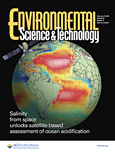
R. Prucek, J. Tucek, J. Kolarik, I. Huskova, J. Filip, R. S. Varma, V. K. Sharma, R. Zboril: Ferrate(VI)-Prompted Removal of Metals in Aqueous Media: Mechanistic Delineation of Enhanced Efficiency via Metal Entrenchment in Magnetic Oxides, ENVIRONMENTAL SCIENCE & TECHNOLOGY, vol. 49, iss. 4, pp. 2319-2327, 2015.
DOI: 10.1021/es5048683, IF = 6.198
Abstract: The removal efficiency of heavy metal ions (cadmium(II) – Cd(II), cobalt(II) – Co(II), nickel(II) – Ni(II), and copper(II) – Cu(II)) by potassium ferrate(VI) (K2FeO4, Fe(VI)), was studied as a function of added amount of Fe(VI) (or Fe) and varying pH. At pH = 6.6, the effective removal of Co(II), Ni(II), and Cu(II) from water was observed at a low Fe-to-heavy metal ion ratio (Fe/M(II) = 2:1) while a removal efficiency of 70% was for Cd(II) ions at a high Fe/Cd(II) weight ratio of 15:1. The role of ionic radius and metal valence state was explored by conducting similar removal experiments using Al(III) ions. The unique combination of X-ray diffraction (XRD), X-ray photoelectron spectroscopy (XPS), in-field Mössbauer spectroscopy, and magnetization measurements enabled the delineation of several distinct mechanisms for the Fe(VI)-prompted removal of metal ions. Under Fe/M weight ratio of 5:1, Co(II), Ni(II), and Cu(II) were removed by the formation of MFe2O4 spinel phase and partially through their structural incorporation into octahedral positions of γ-Fe2O3 (maghemite) nanoparticles. In comparison, smaller sized Al(III) ions got incorporated easily into the tetrahedral positions of γ-Fe2O3 nanoparticles. In contrast, Cd(II) ions do not create either the spinel ferrite structure or incorporate into the lattice of iron(III) oxide phase due to the distinct electronic structure and ionic radius. Environmentally-friendly removal of heavy metal ions at a much smaller dosage of Fe than those of commonly applied iron-containing coagulants, and the formation of ferrimagnetic species preventing metal ions leaching back into the environment and allowing their magnetic separation are highlighted.
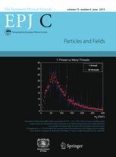
Pierre Auger Collaboration: Search for patterns by combining cosmic-ray energy and arrival directions at the Pierre Auger Observatory, EUR. PHYS. J. C vol. 75, iss. 6, 2015.
DOI: 10.1140/epjc/s10052-015-3471-0, IF = 5.331
Abstract: Energy-dependent patterns in the arrival directions of cosmic rays are searched for using data of the Pierre Auger Observatory. We investigate local regions around the highest-energy cosmic rays with E ≥ 6 x 1019 eV by analyzing cosmic rays with energies above E ≥ 5 x 1018 eV arriving within an angular separation of approximately 15°. We characterize the energy distributions inside these regions by two independent methods, one searching for angular dependence of energy-energy correlations and one searching for collimation of energy along the local system of principal axes of the energy distribution. No significant patterns are found with this analysis. The comparison of these measurements with astrophysical scenarios can therefore be used to obtain constraints on related model parameters such as strength of cosmic-ray deflection and density of point sources.
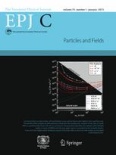
ATLAS Collaboration: Measurement of the production and lepton charge asymmetry of W bosons in Pb+Pb collisions at root sNN=2.76 TeV with the ATLAS detector, The European Physical Journal C, 2015.
DOI: 10.1140/epjc/s10052-014-3231-6, IF = 5.331
Abstract: A measurement of W boson production in lead-lead collisions at root sNN=2.76 TeV is presented. It is based on the analysis of data collected with the ATLAS detector at the LHC in 2011 corresponding to an integrated luminosity of 0.14 nb-1 and 0.15 nb-1 in the muon and electron decay channels, respectively. The differential production yields and lepton charge asymmetry are each measured as a function of the average number of participating nucleons (Npart) and absolute pseudorapidity of the charged lepton. The results are compared to predictions based on next-to-leading-order QCD calculations. These measurements are, in principle, sensitive to possible nuclear modifications to the parton distribution functions and also provide information on scaling of W boson production in multi-nucleon systems.

ATLAS Collaboration: Jet energy measurement and its systematic uncertainty in proton–proton collisions at root s= 7 TeV with the ATLAS detector, The European Physical Journal C, 2015.
DOI: 10.1140/epjc/s10052-014-3190-y, IF = 5.331
Abstract: The jet energy scale (JES) and its systematic uncertainty are determined for jets measured with the ATLAS detector using proton–proton collision data with a centre-of-mass energy of root s= 7 TeV corresponding to an integrated luminosity of 4.7 fb-1. Jets are reconstructed from energy deposits forming topological clusters of calorimeter cells using the anti-kt algorithm with distance parameters R = 0.4 or R = 0.6, and are calibrated using MC simulations. A residual JES correction is applied to account for differences between data and MC simulations. This correction and its systematic uncertainty are estimated using a combination of in situ techniques exploiting the transverse momentum balance between a jet and a reference object such as a photon or a Z boson, for 20≤pTjet
< 1000 GeV and pseudorapidities


